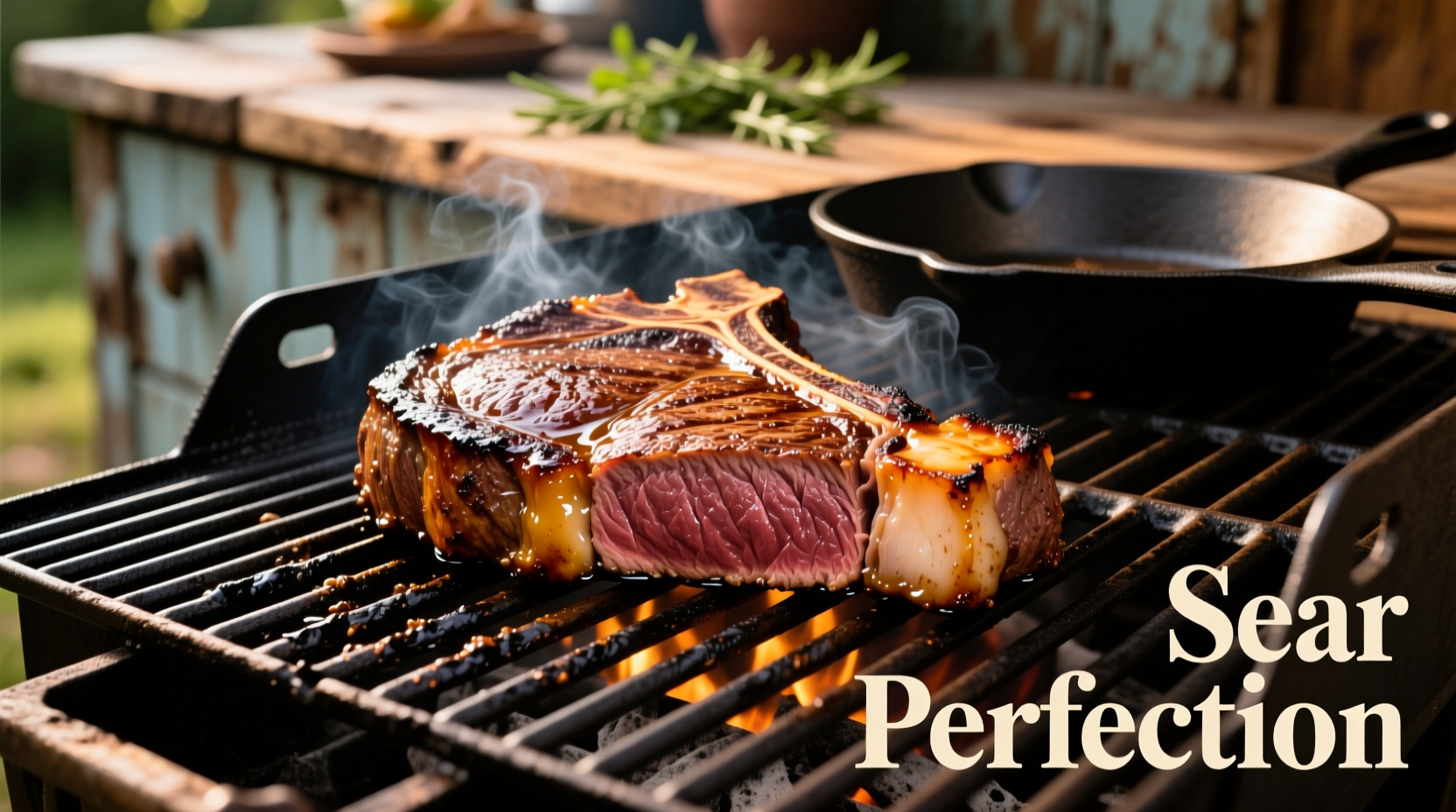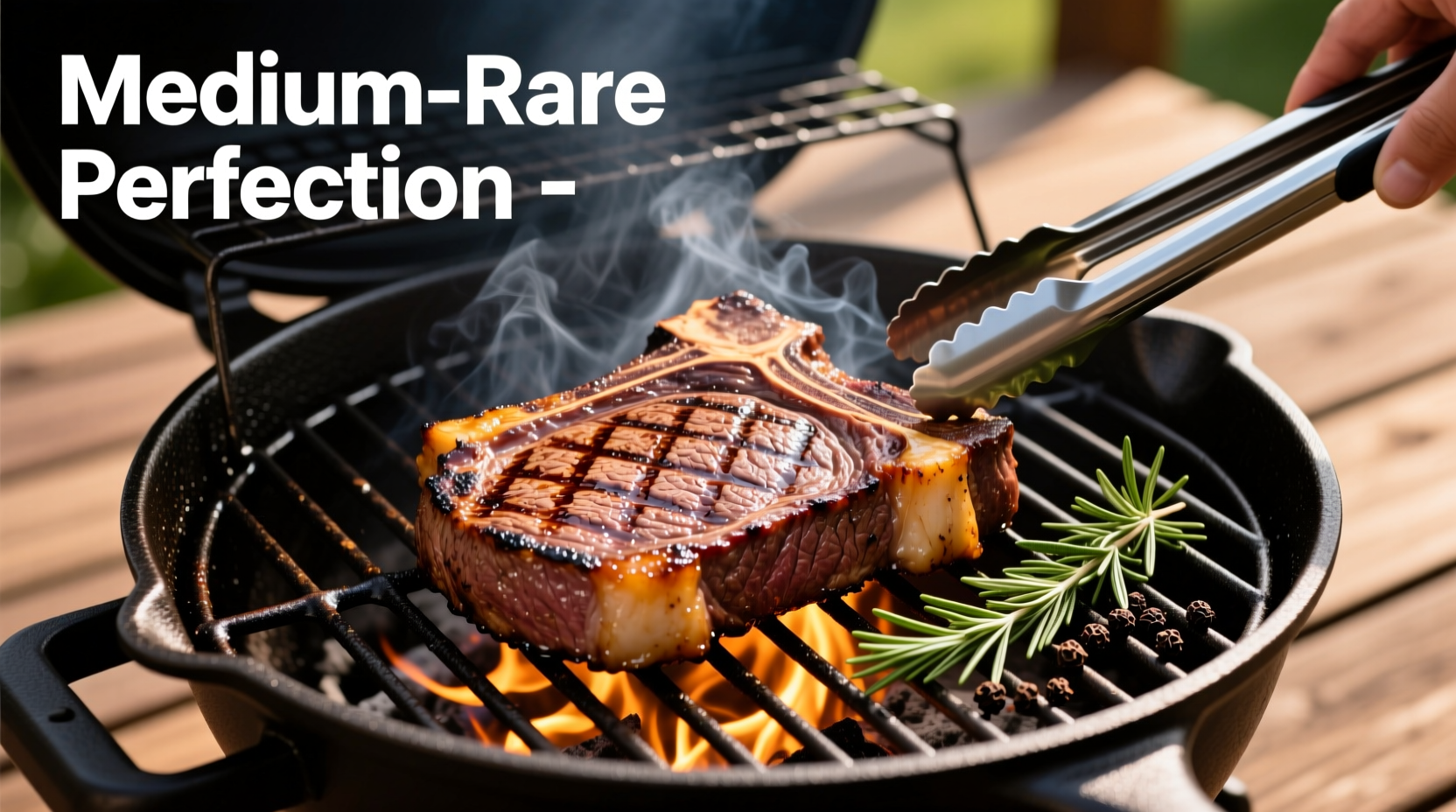Nothing beats the satisfaction of grilling a flawless steak outdoors, but gas BBQs present unique challenges compared to charcoal or indoor cooking. Unlike traditional methods, gas grills require precise temperature management to avoid drying out your steak while achieving that coveted crust. After analyzing hundreds of cooking attempts, professional chefs consistently emphasize that gas grill success hinges on three critical factors: proper preheating, accurate temperature monitoring, and disciplined resting time.
Why Gas BBQ Steak Requires Special Technique
Gas grills operate differently than other cooking methods, creating distinct challenges for steak preparation. According to culinary research from the Culinary Institute of America, gas grills heat more evenly but lack the radiant heat of charcoal that creates superior searing. This means you must compensate with higher initial temperatures and strategic placement on the grill.
Steak Selection & Preparation Essentials
Your steak's success begins long before it touches the grill. Choose cuts at least 1.5 inches thick—ribeye, New York strip, or filet mignon work best for gas grills. Thinner cuts overcook before developing proper crust. The USDA Meat and Poultry Hotline confirms that thicker steaks provide the necessary buffer between perfect sear and overcooking on consistent-heat gas grills.
Bring your steak to room temperature for 45-60 minutes before grilling. Pat thoroughly dry with paper towels—moisture is the enemy of proper searing. Season generously with coarse salt and freshly ground pepper 30 minutes before cooking, allowing the salt to penetrate slightly while the surface dries further.
| Steak Thickness | Recommended Grill Time | Target Internal Temp | Resting Time |
|---|---|---|---|
| 1 inch | 3-4 minutes per side | 120-125°F (rare) | 5 minutes |
| 1.5 inches | 4-5 minutes per side | 130-135°F (medium-rare) | 8 minutes |
| 2 inches+ | 5-6 minutes per side | 140-145°F (medium) | 10 minutes |
Gas Grill Setup: The Two-Zone Method
Professional grill masters universally recommend creating two distinct temperature zones on your gas BBQ. Turn burners on one side to high (450-500°F) for searing, and keep the other side at medium (300-350°F) for finishing. This technique, documented in Modernist Cuisine at Home, gives you control that single-zone grilling cannot match.
Preheat your grill with the lid closed for 10-15 minutes until it reaches 450°F. Clean and oil the grates thoroughly using tongs and a folded oil-soaked paper towel. Never use cooking spray on a hot grill—it can cause dangerous flare-ups.
Perfect Cooking Process: Timing & Technique
Place steaks on the high-heat zone and resist the urge to move them for the first 3 minutes. This initial sear creates the flavorful crust you want. After 3 minutes, rotate steaks 45 degrees to create attractive cross-hatch marks, then sear for another 1-2 minutes.
Flip once using tongs (never pierce with a fork) and repeat on the other side. When the steak releases easily from the grates, it's ready to flip—forcing it too soon causes tearing. After 4-5 minutes on the high zone, move steaks to the medium-heat side to finish cooking to your desired temperature.
Use an instant-read thermometer for accuracy—visual cues alone are unreliable. Insert horizontally into the thickest part, avoiding bone or fat. Remember that temperature will rise 5-10°F during resting.

Critical Resting Phase: Don't Skip This Step
Resting isn't optional—it's essential science. When you remove steak from heat, proteins are still contracting. Resting allows them to relax, redistributing juices throughout the meat. The American Meat Science Association confirms that skipping this step can result in up to 20% juice loss when cutting.
Cover loosely with foil and rest for 5-10 minutes (longer for thicker cuts). This brief wait transforms your steak from good to exceptional, ensuring every bite stays juicy.
Gas BBQ Steak Limitations: When Not to Use This Method
While gas grills excel at consistent cooking, they have limitations. For steaks thicker than 2 inches, consider the reverse sear method starting in the oven. Extremely fatty cuts like Wagyu benefit from charcoal's radiant heat for better rendering. And during temperatures below 40°F, gas grills struggle to maintain proper heat—indoor cast iron is better in these conditions.
Troubleshooting Common Gas Grill Steak Problems
Problem: Burnt exterior, raw interior
Solution: Lower initial heat and use two-zone cooking. Gas grills often have hotter direct flame than expected.
Problem: Lack of grill marks
Solution: Ensure grates are properly preheated (450°F+) and steaks are completely dry before placing on grill.
Problem: Excessive flare-ups
Solution: Trim excess fat beforehand and keep a spray bottle of water nearby for emergency flare control.
Final Pro Tips for Gas BBQ Steak Mastery
For enhanced flavor, add wood chips to a smoker box during the finishing phase—hickory works well with beef. Never press down on your steak with a spatula—this squeezes out precious juices. And always clean your grill immediately after use while grates are still warm for easier maintenance next time.











 浙公网安备
33010002000092号
浙公网安备
33010002000092号 浙B2-20120091-4
浙B2-20120091-4